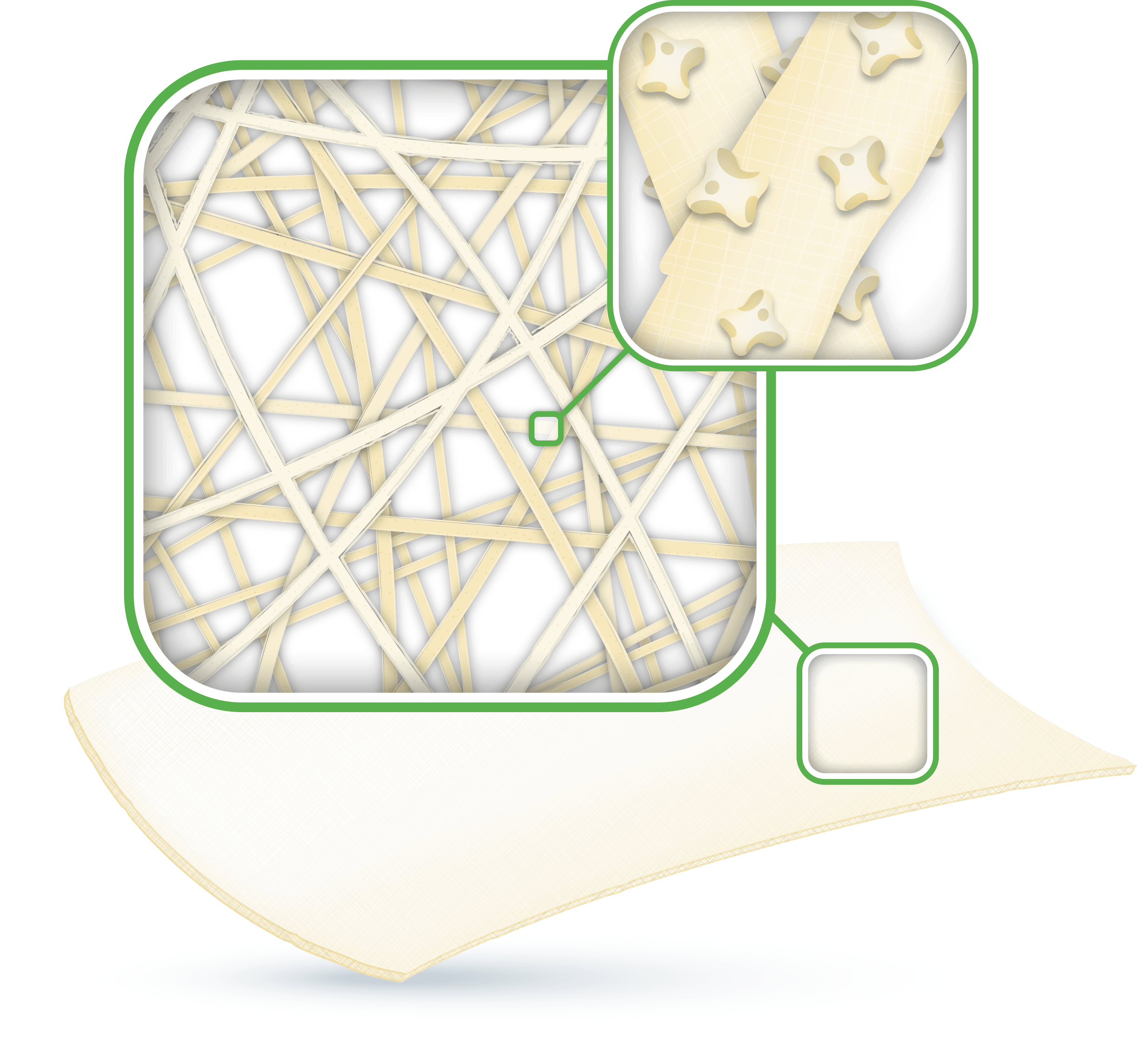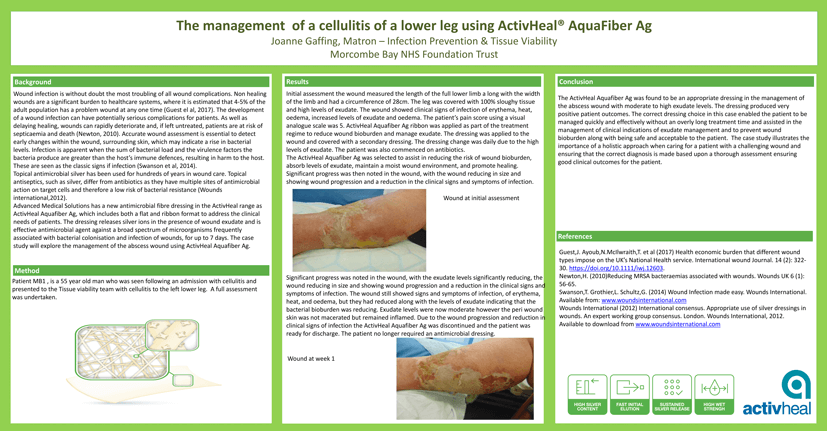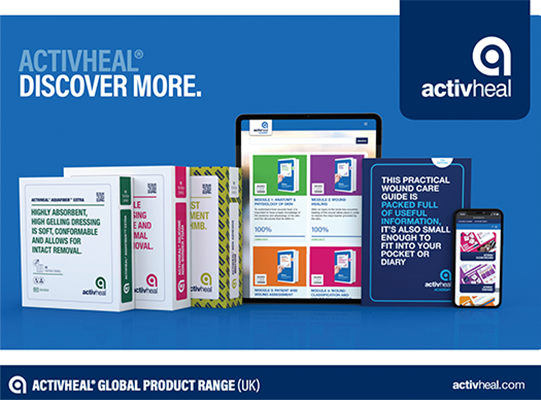Clinical Resource: The management of a cellulitis of a lower leg using ActivHeal® AquaFiber Ag
Joanne Gaffing, Matron – Infection Prevention & Tissue Viability
Morecambe Bay NHS Foundation Trust
Clinical Resource
The management of a cellulitis of a lower leg using ActivHeal® AquaFiber Ag
Joanne Gaffing, Matron – Infection Prevention & Tissue Viability
Morecambe Bay NHS Foundation Trust
BACKGROUND
Topical antimicrobial silver has been used for hundreds of years in wound care. Topical antiseptics, such as silver, differ from antibiotics as they have multiple sites of antimicrobial action on target cells and therefore a low risk of bacterial resistance (Wounds international, 2012).
Advanced Medical Solutions has a new antimicrobial fibre dressing in the ActivHeal® range called ActivHeal® Aquafiber Ag, which includes both a flat and ribbon format to address the clinical needs of patients. The dressing releases silver ions in the presence of wound exudate and is effective antimicrobial agent against a broad spectrum of microorganisms frequently associated with bacterial colonisation and infection of wounds, for up to 7 days. The case study will explore the management of the abscess wound using ActivHeal® Aquafiber Ag.
METHOD

RESULTS
The ActivHeal® Aquafiber Ag was selected to assist in reducing the risk of wound bioburden, absorb levels of exudate, maintain a moist wound environment, and promote healing. Significant progress was then noted in the wound, with the wound reducing in size and showing wound progression and a reduction in the clinical signs and symptoms of wound infection.

Wound at Initial Assessment

Wound at Week 1
CONCLUSION
References
Guest, J. Ayoub, N. McIlwraith, T. et al (2017) Health economic burden that different wound types impose on the UK’s National Health Service. International Wound Journal. 14 (2): 32230. https://doi.org/10.1111/iwj.12603.
Newton, H. (2010) Reducing MRSA bacteraemias associated with wounds. Wounds UK 6 (1): 56-65.
Swanson, T. Grothier, L. Schultz, G. (2014) Wound Infection made easy. Wounds International. Available from: www.woundsinternational.com
Wounds International (2012) International consensus. Appropriate use of silver dressings in wounds. An expert working group consensus. London. Wounds International, 2012. Available to download from www.woundsinternational.com
CONTACT US FOR MORE INFORMATION
Discover ActivHeal®
Social Media
Our Product Range
AMS Group
ActivHeal®, its logo and the Advanced Medical Solutions logos are registered trademarks of Advanced Medical Solutions Ltd.
Copyright © Advanced Medical Solutions Limited | Design by Lumisi Ltd


